Once vegetables are up and growing, some of them need a little support, especially tomatoes, beans, cucumbers, peas, and peppers. This avoids problems and gives plants more sun exposure. A trellised plant can also provide shade for a crop like lettuce. See different ways to support your plants!
We provide plants with support for many reasons: keep the fruit clean, avoid breakage under weight, provide more sun exposure, deter disease, and also let the plants sprawl and climb and spread out.
However, using vertical space also gives you more room for planting, increasing the productivity of your garden plot.
Different techniques work well for different crops. You can stake, string, cage, trellis, teepee, and more. Here are some of the different techniques to support your plants—and grow up!
Staking and Stringing
Since I always plant edible-podded peas as soon as possible in the spring, often the ground is still frozen a foot down or so making it impossible to drive poles into the ground. Staking and stringing a fence after the plants have come up can damage them so to avoid this problem we plan ahead and position the plastic mesh pea fence in the fall so it is ready and waiting when the time comes to plant.
See instructions on how to build a trellis and support for climbing vegetables such as peas and beans.
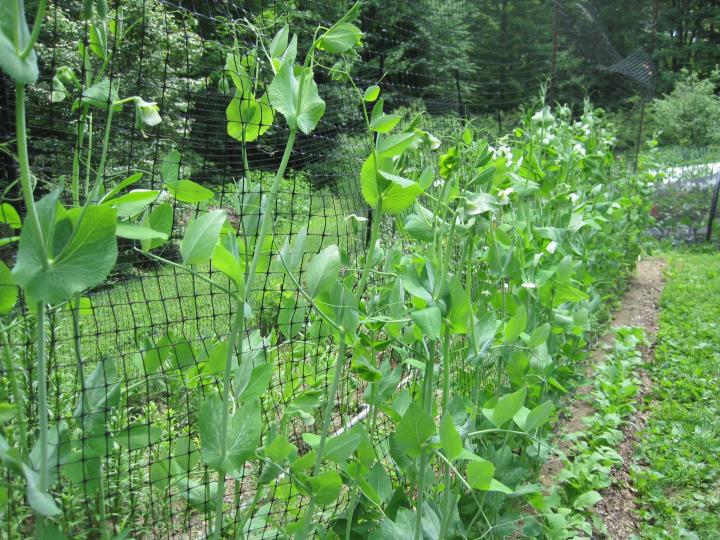
Branching Twigs
Some peas are lazy climbers though and need to have a little guidance. We often add a row of string on the outside of the vines, threading it through the fence at intervals to hold the vines close to it. Shorter varieties of peas can be grown on branches stuck in the soil between the plants. Called pea brush, any kind of branching twigs will do that are long enough to support the crop, leaving 6 inches or more to stick in the ground.
Bean Teepees
Pole beans are excellent climbers and definitely need something to wind around. Teepees of long bamboo poles work great or you can construct a trellis from rebar, electrical conduit pipe, wood, or bamboo by driving poles into the ground at intervals and wiring more poles horizontally across the top. From this top piece you can hang plastic mesh fencing or just wrap string around the poles to create your own web for the vines to climb. It needn’t be a work of art because the vines will soon cover it. If you already have fencing around your garden or yard make use of that as a bean support. Once the vines reach the top they will flop over and grow back down.
See how to easily build a bean teepee.
Even though they are called bush beans we find that some of the varieties we grow get about 2 feet tall. Since we grow a double or triple row in each bed we find that putting a short strip of fencing or stakes with string wrapped between around the perimeter of the bed them helps to keep them contained and not flopping into the walkway. It also makes picking easier because you can see the beans through the foliage better.
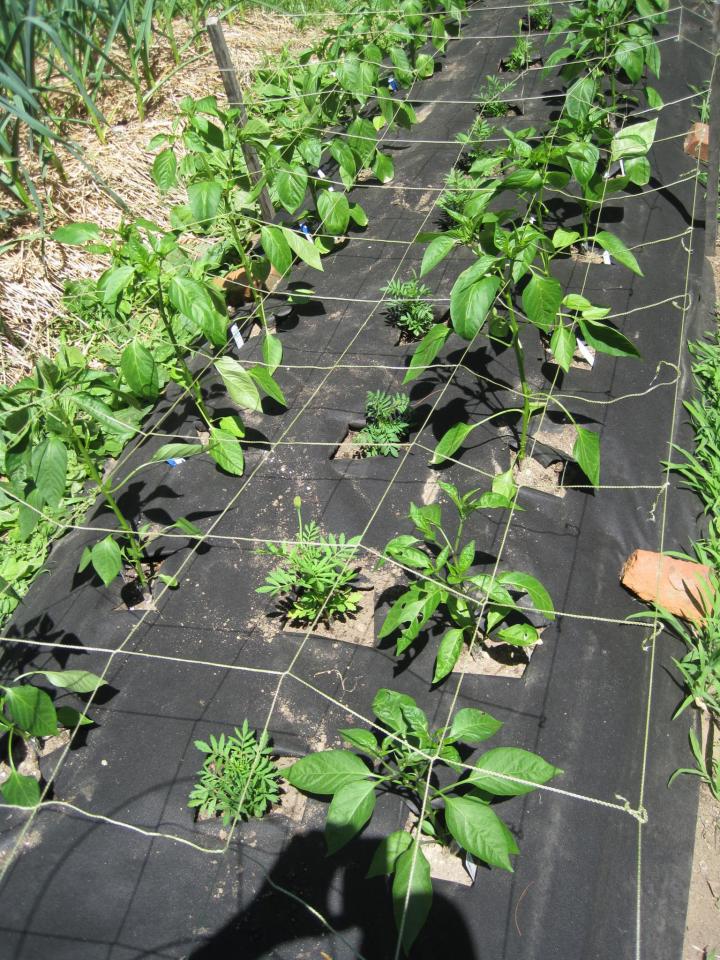
Netting
While waiting for the sweet peppers to ripen, all that heavy fruit can weigh the plants down and a strong thunderstorm adds to it, often breaking the plants. To avoid that kind of disappointment we stretch netting horizontally over the bed and the plants grow right up through it. It is the same method we use for flowers to keep the stems straight for cutting. If you have only a few plants, metal tomato cages work well too.
Sturdier Tomato Cages
Speaking of tomatoes, those flimsy cages they sell at the hardware store are fine for bush or determinate varieties but for the indeterminates, they just don’t do the job. See how to make a tomato cage yourself.
You can make a taller and more sturdy version yourself from concrete reinforcing wire. Cut the wire so you can roll it into a tube 16 inches across at least. Place it over the plant and pound in a stake on one side to keep it from toppling over. Its 6 inch squares will still allow you to reach in and pick a big fat beefsteak.
If you train your plants to one or two main branches, they can be tied to a stake or trained to grow up a string suspended overhead on the same kind of trellis I explained above for the beans.
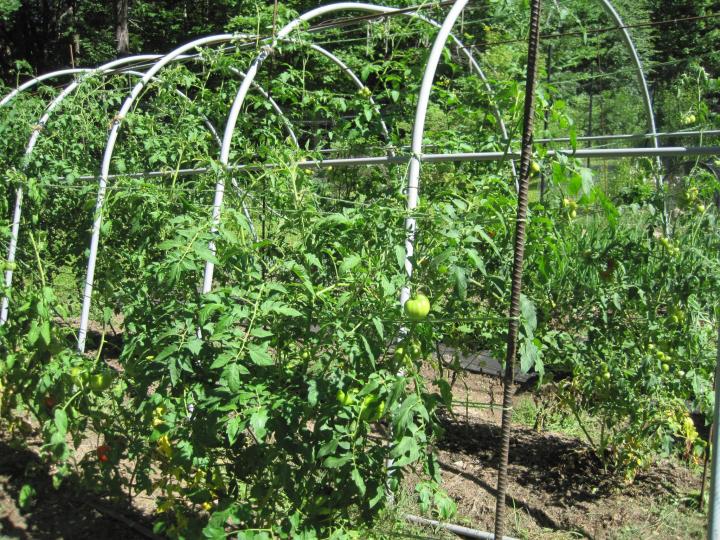
We have grown them under an old greenhouse frame—minus the plastic—and wound the vines around strings we hung down from the frame overhead. It is amazing how tall the plants got. Eventually I couldn’t reach the tomatoes to harvest them.
Basket Weave for Tomatoes
However, our favorite way to support tomatoes is the basket weave.
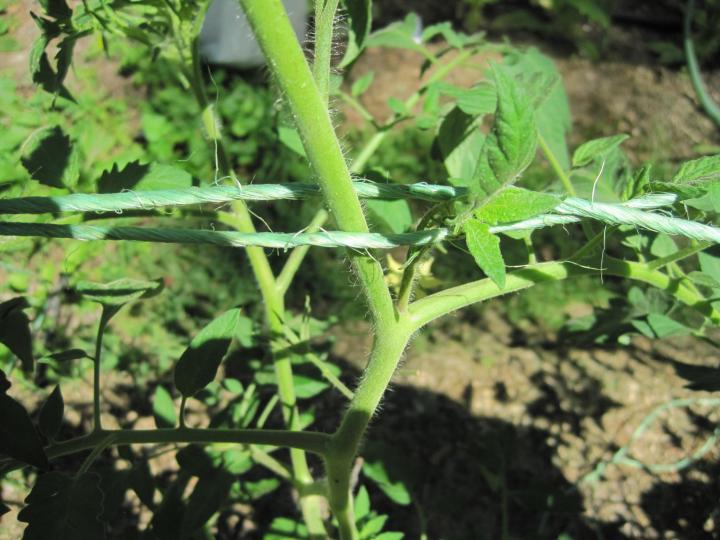
We put tall rebar stakes in the ground every 6 or 8 plants and run 2 strings from pole to pole weaving them between the plants as we go. During the early part of the summer we add another layer of string every week as the plants get taller. It eventually forms a wall of tomatoes, allowing sun to penetrate the plants and ripen the fruit.
Trellises
Cukes benefit from growing on a trellis or fence.
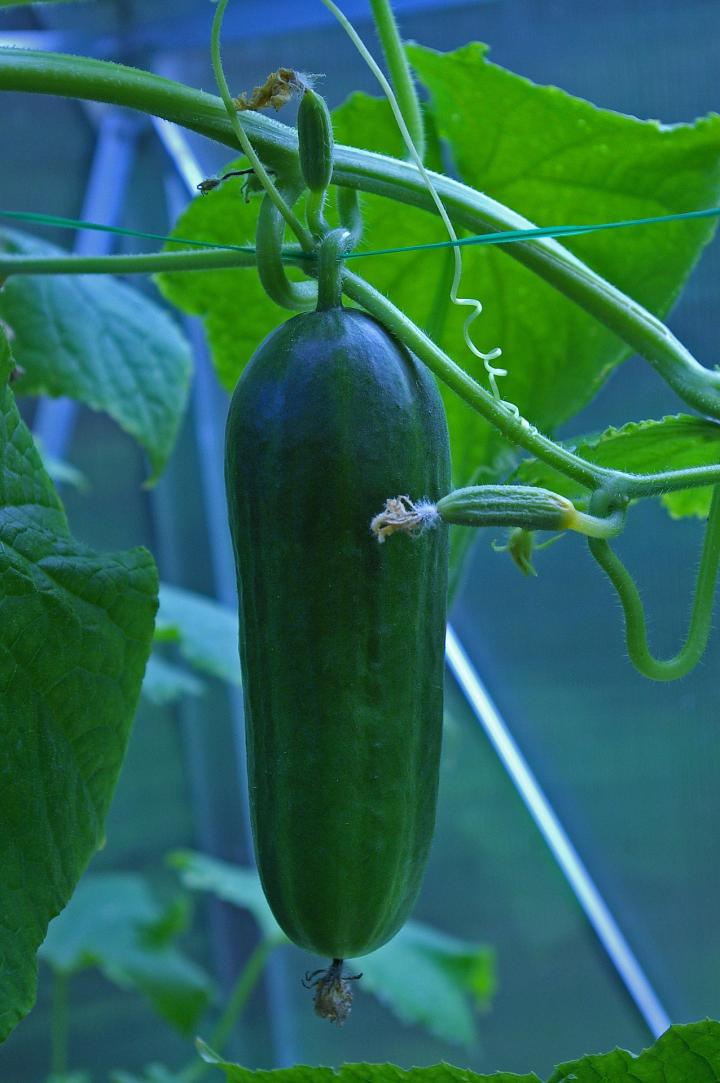
The fruit can hang down and gravity helps them grow straighter. They are easy to find and pick with a minimum of bending.
Mesh Bags
I have tried growing melons on a fence, but the individual fruit needs extra support, preferably something that can stretch and expand with the melons as they enlarge. We tried using the mesh bags that onions and other produce come in and it did the trick.
Eggplants also benefit from a bit of support, especially if you grow the large Italian types.
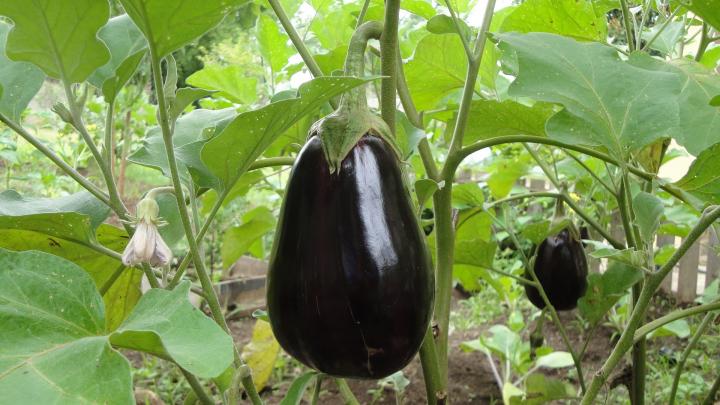
A stake or tomato cage works great to keep the plants upright and the developing fruits off the ground.
Soft String or Ties
Remember when tying up any plant to use soft string, preferably biodegradable and not treated with chemicals. Or make ties from soft cloth, an old tee shirt or stockings. Velcro is fine but no wire twist ties! Tie the plants to the stake loosely in a figure 8 to avoid pinching the stem.
















Comments